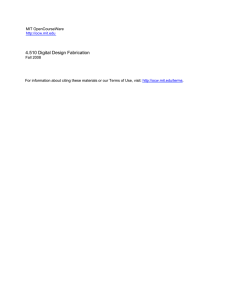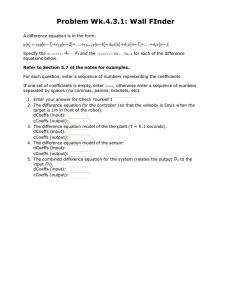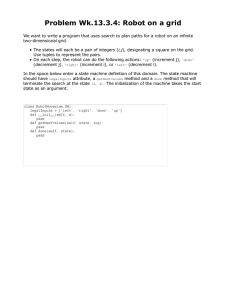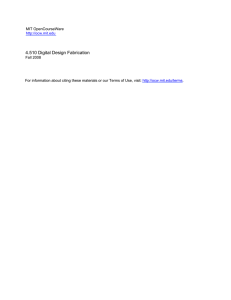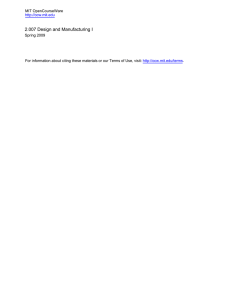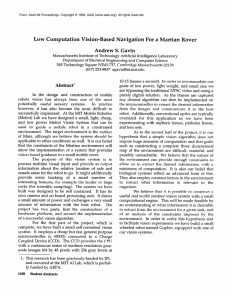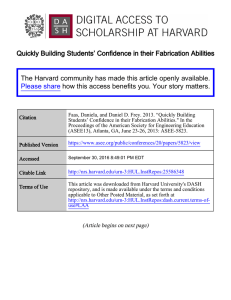Document 13664479
advertisement
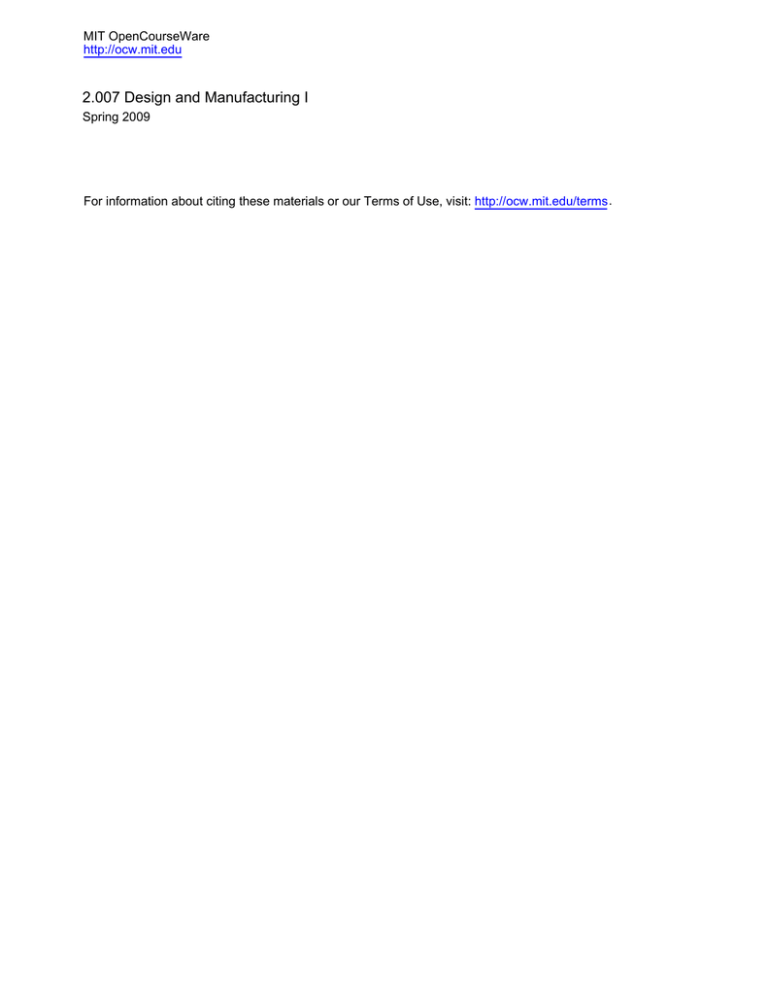
MIT OpenCourseWare http://ocw.mit.edu 2.007 Design and Manufacturing I Spring 2009 For information about citing these materials or our Terms of Use, visit: http://ocw.mit.edu/terms. Final Notebook Submission & Reflection Document 2.007 -- Introduction to Design and Manufacturing I Spring 2009, Section 04 DUE: Bring your notebook to our final lab meeting this week. The reflection document can be submitted separately via email no later than midnight on Friday, May 15th. I will review them both and send out an email when they are graded and available the following week. DESCRIPTION: With the hours of design, fabrication, analysis and hard work now behind you, your notebooks (not your robot!) should serve as final documentation of all of your design thinking and efforts. As such, take a minimum of 3-4 pages in your notebook to be certain that your final robot design is fully captured. I should be able to look at your robot and understand What was your final machine and what does it do? To answer these questions, you might use annotated photographs and/or solid model and a detailed description of your seeding round results. Beyond the technical details of your robot and its fabrication, you have learned about the design process. Capture the most important aspects of this learning in a written Word document of no less than 2 pages. In particular, consider what you have learned and how the experience may change your design approach in the future. Below are some suggestions on elements you may choose to include in your reflection: 1. Use of design tools. What role did design tools such as CAD and computational tools play in your design? Did these tools every help you to foresee and avoid a problem? Did you make more use of the tools compared to those around you, or less? What was the impact on your design? 2. Some comparisons. Are there some other machines that help us to understand your machine and your design process? How did other people approach the same tasks that you attempted? Are there any principles that can be generalized from these comparisons? 3. What you learned. Please describe in some detail a few key things you learned. The things you list might concern machine elements, fabrication, solid mechanics, the creative process, and/or decision making. An insightful analysis of a few things you learned is preferred to a long list. 4. A novel design rule. If there is one design lesson that you think is particularly relevant, can benefit future design students and is non-obvious, craft a succinct rule that generalizes this lesson. It should outline the particular design scenario your rule addresses, state the rule and how it is applied. You should also delineate the applicability and limitations of this rule.
